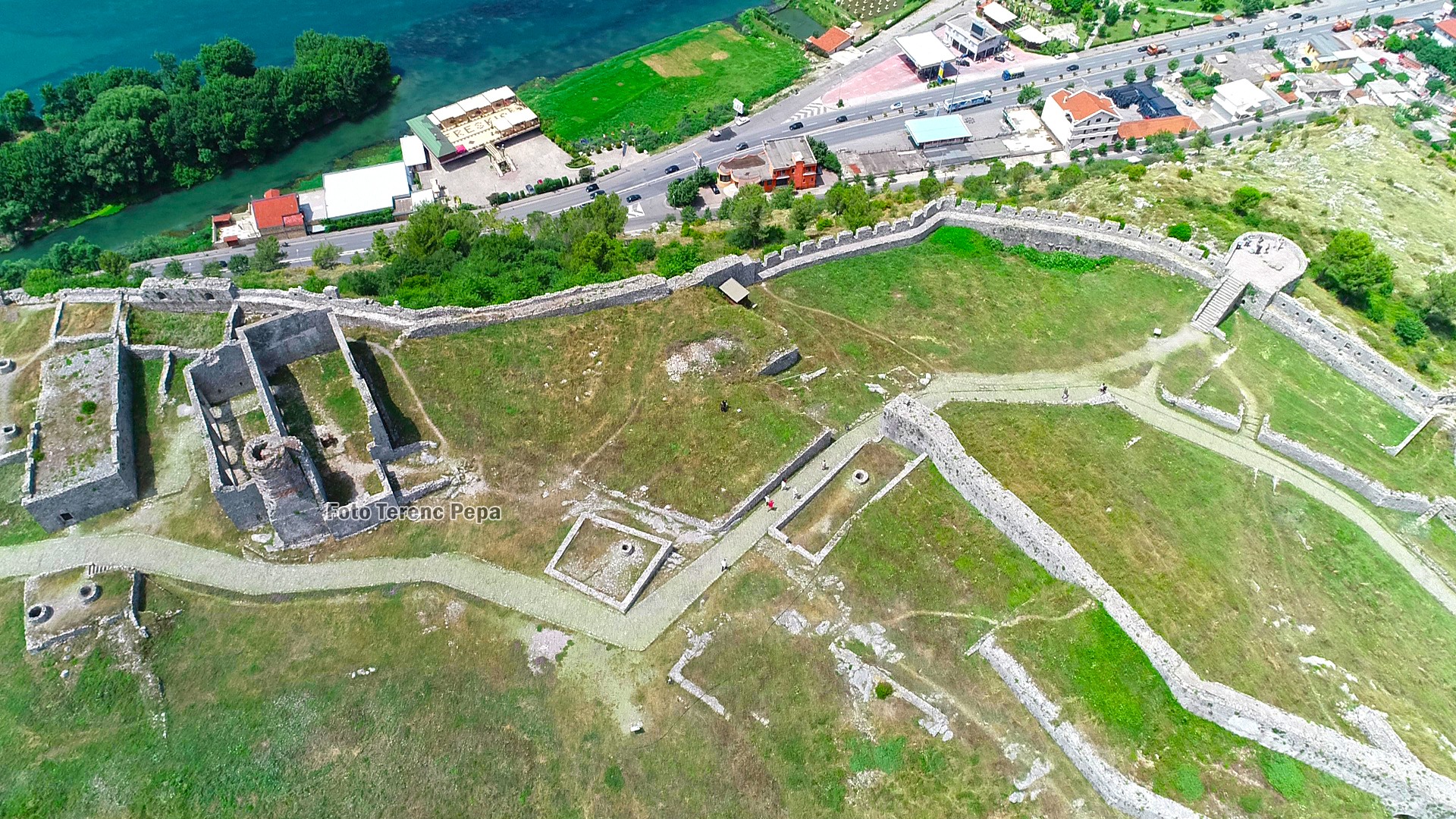
From Rozafa to Marubi, Shkodra’s History Told by its Inhabitants
Shkodra Castle a.k.a. Rozafa Castle
Shkodra’s Castle is in the southern entrance of the city, surrounded by the Buna, Drini and Kiri rivers. The walls of the castle are 880 meters long and surround a surface of 35.000 m2. It is the biggest castle in Albania, and one of the biggest in the Balkan region. The archaeological excavations show that the castle is one of the earliest settlements in Shkodra, dated 4000 years ago. Visitors get to know with many objects and monuments, that belong to the different historical periods. The name of the castle is related to a myth, of a walled woman named Rozafa, a symbol of resistance, self-sacrifice, and heroism of the people of Shkodra.
The shape that the castle has today, has taken it during the reigning of the Balshaj family, in the 14th century AD. In this castle are found traces from the classical period, middle ages until the 20th century. The medieval walls are built with plaster and are built above the ruins of Illyrian walls and follow the disorderly line of the terrain. Inside of the castle are two high walls, that divide the surface into three courtyards. The main gate is placed on the side where the slope of the hills is smaller, and after that is a long and wide gallery, which on both sides has four spaces that served as protective spaces.
After you pass this gallery you find yourself in front of another gate, and you see the first courtyard, where are a series of fortified objects. The second courtyard takes bigger space and is located in the central part of the castle. The third courtyard served as the place where the military garrison was gathered. These courtyards, communicate with each other with small gates. To get out of the castle there were some hidden exits which now don’t function anymore.
In the fortifications, and other constructed objects are preserved even today the ancient and medieval traces, up to the period of the Bushati family. Besides the fortifying system, we could mention: the Church of Saint Stephen, turned afterward into a mosque, the prison, and the secret exits. From its walls, it could be overlooked the majestic landscape of Shkodra Lake, and also Drin, Buna and Kir rivers.

Leave your comment